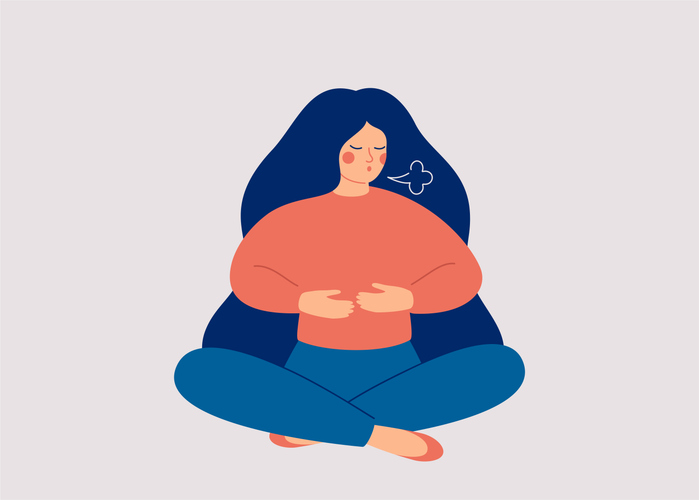How to deal with urges to self-harm
It can be difficult to ignore urges to self-harm, but there are actions you can take to manage these urges and feel better in the moment.

People use a range of techniques both to distract themselves from self-harm urges in the moment and to delay or minimise the hurt they cause to themselves through self-harming. In the long term, however, it is important to replace self-harm behaviours with those that do not cause hurt or injuries and that actively support your physical and mental well-being.
If you self-harm, you might not feel you deserve compassion or support, but you do. Regardless of the extent of your physical injuries or how long you’ve been struggling, self-harm behaviours and the difficulties that might have contributed to them should always be taken seriously. Seeking help is crucial, and the sooner you reach out, the sooner you can start your recovery journey. This is a journey you don’t have to face alone, and one you’ll likely be grateful you began.
How to deal with urges to self-harm
Understanding why you might be using self-harm as a coping mechanism can be an important step in finding a way to manage urges to self-harm.
Self-harm as a coping mechanism
In general, people use self-harm as a coping mechanism. A coping mechanism is a pattern of thoughts or behaviours that a person uses to help them manage stress. Recognising self-harm as a coping mechanism can help you find ways of managing the behaviours and open up the possibility of discovering less harmful ways to cope.
Self-harm may provide you with relief in the moment, but all forms of self-harm come with risks and can cause other problems in your life in the long term. Letting go of a destructive coping mechanism when you don’t yet have an alternative to replace it with can be difficult. This is why it can be challenging to resist urges to self-harm even when you want to.
As you explore healthier ways of coping, it’s important to give yourself compassion and understanding. The coping strategies you reach for to deal with stress, fear, and trauma do not make you a better or worse person—they simply make you human. Self-harm is often a response to overwhelming emotions, and it is a sign that you are trying to navigate difficult experiences, not a reflection of your worth. Rather than judging yourself for how you’ve coped in the past, acknowledge the strength it takes to seek out new strategies. With the right support, you can gradually develop new coping mechanisms that are safer and more beneficial to your wellbeing.
Finding alternative long-term coping mechanisms can take time and may involve trying different approaches until you find what works best for you. Being kind and patient with yourself can make the process feel less overwhelming.
How to take the first steps towards self-harm recovery
Taking the first step towards recovery from self-harm often involves understanding why you want to make a change.
Find your reasons to stop self-harming
If you are thinking about recovering from self-harm, taking time to reflect on why you want to stop self-harming can be a good place to begin. While it might feel like an obvious question, the answers can be more complicated than you might expect. Some of the reasons people want to stop self-harming include:
- Concern for their health
- Discomfort with hiding their behaviour
- Dislike of having physical scars
- Creating worry for people in their life
- Feeling judged by others
- Realising that self-harm is becoming less effective as a coping mechanism
- Wanting to find healthier ways to cope with their situation and/or emotions
Self-harm recovery can be a challenging process at times. Remembering the reasons you want to stop self-harming can help when you’re experiencing urges to self-harm. You may find it helpful to write down your reasons to stop self-harming. Alternatively, you could type them into your phone so that you always have them when you need them.
Identify your self-harm triggers
Some people notice a clear pattern of events that leads to their self-harm. Others find it difficult to identify where their urges to self-harm come from. When you understand the factors that bring about an urge to self-harm (i.e., a self-harm ‘trigger’), this awareness can help you take steps to prevent self-harm.
It’s not always easy to identify what is causing the urge to self-harm. Taking some time to consider what happens before you feel like self-harming can be helpful. Here are some questions that might help you identify your self-harm triggers:
- What happened before I felt the need to harm myself?
- What thoughts were on my mind before I got the urge?
- What physical sensations was I feeling right before I got the urge (e.g., racing heart, shallow breathing, loss of sensation or a feeling of disconnection from my body)?
- How do I feel after self-harming?
Keeping a diary
If you’re struggling to figure out the things (e.g., people, situations, thoughts, environments) that cause your urges to self-harm, keeping a diary can help. When you feel like self-harming, write down:
- The day
- What was happening at the time
- How you felt
- What thoughts you were having
Looking back at the diary can help you spot patterns you might not have seen before.
Recognising and understanding your self-harm triggers can help you avoid the urge to self-harm. Sometimes triggers can be avoided. For example, if you notice you have urges to self-harm when you’re alone with nothing to do in the evening, you might schedule enjoyable activities during that time so it becomes less triggering.
However, it’s not always possible to avoid other triggers. In such cases, trying out new stress management techniques can be really helpful.
Many people find that working with a therapist not only helps them identify their triggers for self-harm but also assists in developing long-term strategies to replace self-harm behaviours. Having someone who is trained to support you and can take the time to explore what’s been going on for you can make all the difference.
Techniques to deal with urges to self-harm
Managing urges to self-harm usually involves finding practical strategies to create distance from harmful behaviours.
Putting barriers between yourself and self-harm
When urges to self-harm come, keeping away from things you may use to harm yourself is a good idea. You can prepare for this ahead of time by putting these items in hard-to-reach places, asking a trusted family member or friend to hold on to them, or getting rid of them completely if they don’t serve other purposes.
Creating a comfort box
Create a “comfort box” that you can go to when you need cheering up or some space to self-soothe. You can use a shoebox for this, any box will do. Some people enjoy decorating the box. Fill it with things that make you happy, such as photos that make you feel good, fidget toys, sweets, or objects that have sentimental value and remind you of something or someone you love. Include anything that will help you smile or de-stress when you start to have thoughts of self-harm.
It may also help to write down a list of things you like about yourself that you can read when you feel the need to self-harm. A Pinterest page, blog, or app that brings up positive feelings and helps soothe you can serve the same function as a comfort box.
Getting professional help
Coping with self-harm and mental health difficulties can be challenging, but you don’t have to go through it alone. If you don’t feel you can share this with a parent, teacher, or sibling, try to think of someone you might feel comfortable speaking to. Coping with self-harm in secret can be incredibly difficult and overwhelming. Having someone to confide in can make a real difference and provide much-needed support.
If you choose to speak to a mental health professional, the first step for many people is to talk to your GP, who may refer you for assessment and specialist treatment. Alternatively, there are a range of charities and support organisations, as well as anonymous 24/7 messaging services and helplines, that you can access. Read more information on getting help.
Developing healthier coping mechanisms
Distraction techniques can help manage urges in the moment, but it’s important to also find healthy ways to cope with your emotions in the long term so that you don’t feel like self-harm is the only option.
Healthy coping mechanisms can include things like:
- Talking to someone
- Writing things down or journaling
- Practising self-care by taking time to look after your physical and mental well-being
- Engaging in mindfulness-based techniques
Seeing a therapist or counsellor can help in developing non-harmful coping techniques. They can also tailor these techniques specifically to your individual needs, personality, cultural background, and unique life experiences.
Making a self-harm safety plan
Once you’ve identified your triggers, explored different distraction techniques, and begun to practise non-harmful coping mechanisms, it can be helpful to take what works best for you and create a plan for managing your self-harm urges. This plan can help you to recognise your self-harm urges. The plan can also provide you with actions to take to help resist these urges when they arise. It can be really helpful to share your plan with others and ask for their support if you feel comfortable doing so.
If you are currently receiving treatment for self-harm at a community mental health service, you may have already developed a safety plan in partnership with your care team. The types of information typically included in safety plans are:
- Triggers that might lead you to self-harm and/or warnings signs that you are experiencing an increase in distress
- Personalised coping strategies, including solutions to any problems that might make it feel harder to cope
- People and places that help to support and comfort you when you are experiencing the urge to self-harm
- Contact details for trusted family members and/or friends who can provide support when you are struggling to resist self-harm urges
- Contact details for the mental health service you attend and/or other sources of out-of-hours support, including who to contact in an emergency
Be patient and kind to yourself while recovering from self-harm
Recovering from self-harm is a challenging process with ups and downs. Stressful times and difficult life events can cause setbacks, but these setbacks do not undermine the progress you’ve made. When setbacks come, it’s important to be patient and compassionate with yourself, rather than blaming or criticising yourself. Starting any recovery journey is a brave thing to do, and you deserve to live a happy and healthy life.
Feeling overwhelmed and want to talk to someone?
- Get anonymous support 24/7 with our text message support service
- Connect with a trained volunteer who will listen to you, and help you to move forward feeling better
- Whatsapp us now or free-text SPUNOUT to 50808 to begin.
- Find out more about our text message support service
If you are a customer of the 48 or An Post network or cannot get through using the ‘50808’ short code please text HELLO to 086 1800 280 (standard message rates may apply). Some smaller networks do not support short codes like ‘50808’.






